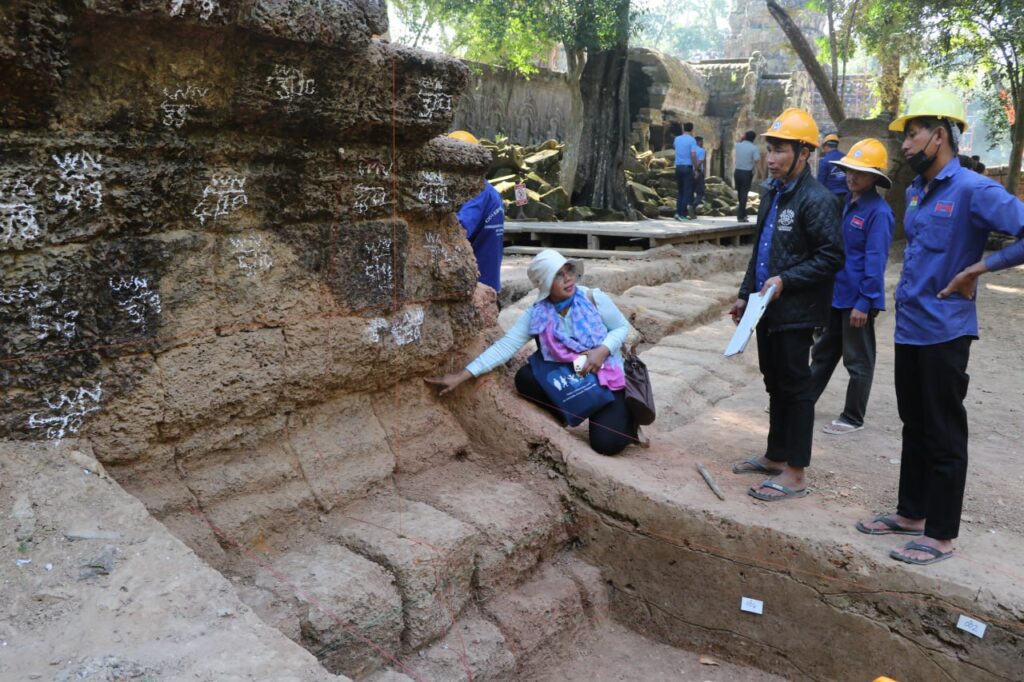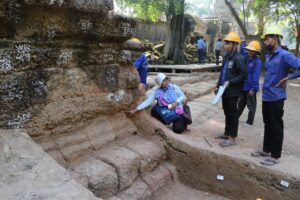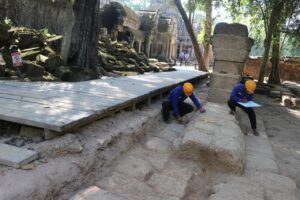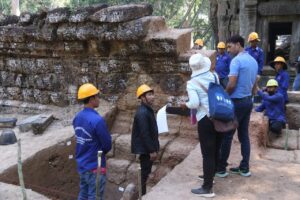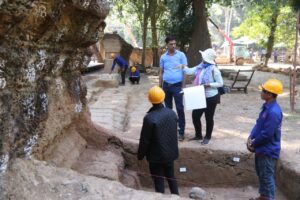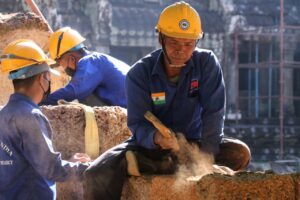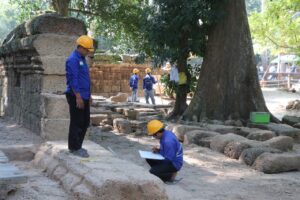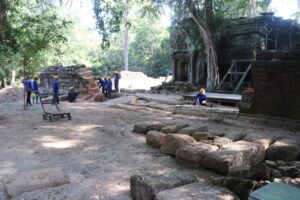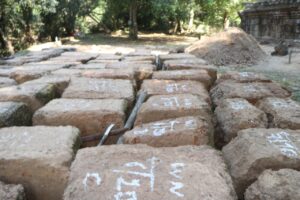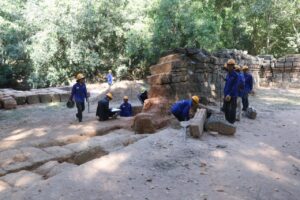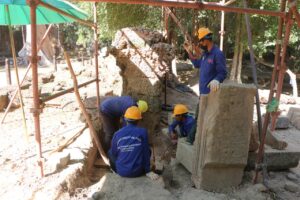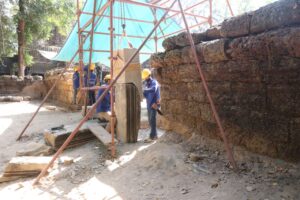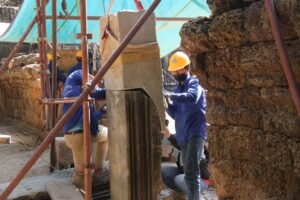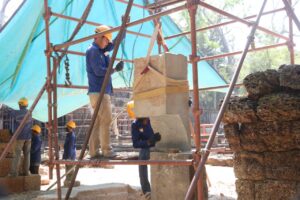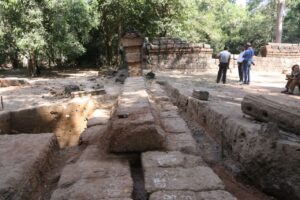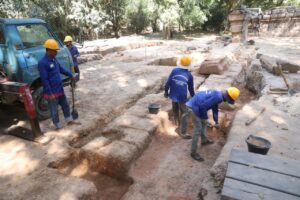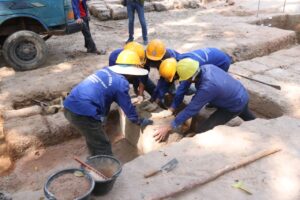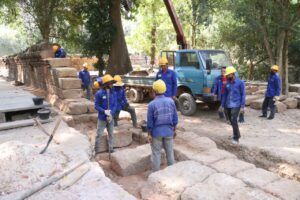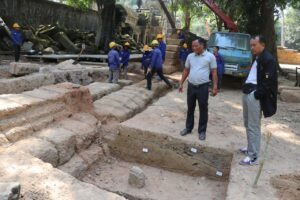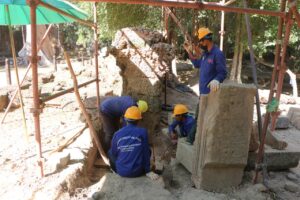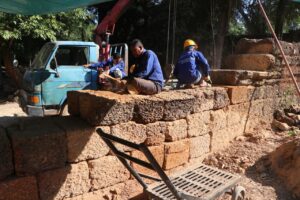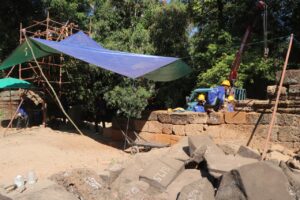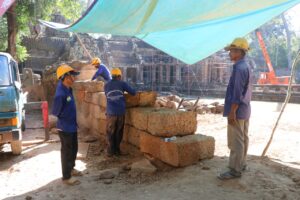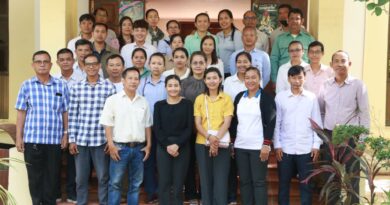អាជ្ញាធរជាតិអប្សរា តាមរយៈកិច្ចសហការជាមួយស្ថាប័នស្រាវជ្រាវបុរាណវិទ្យាឥណ្ឌា(ASI) កំពុងជួសជុល កំពែងថ្មបាយក្រៀម ជ្រុងខាងលិច ផ្នែកខាងជើង នៃប្រាសាទតាព្រហ្ម ដើម្បីលើកតម្លៃសំណង់បុរាណមួយនេះ បន្ទាប់ពីបានរងការខូចខាតទ្រុឌទ្រោម ដោយមូលហេតុជាច្រើន។
លោក Chitranjan Kumar ប្រធានគ្រប់គ្រងការដ្ឋានជួសជុលនៅប្រាសាទតាព្រហ្ម បានឱ្យដឹងថា ក្នុងគម្រោងដំណាក់កាលទី៣ ស្ថាប័នស្រាវជ្រាវបុរាណវិទ្យាឥណ្ឌា(ASI) ក៏បានធ្វើការជួសជុលពង្រឹងឡើងវិញកំពែងថ្មបាយក្រៀម ជ្រុងខាងលិច ផ្នែកខាងជើង នៃប្រាសាទតាព្រហ្ម មានប្រវែងសរុបចំនួន៣០ម៉ែត្រ។ លោកបញ្ជាក់ថា រចនាសម្ពន្ធនៃរបងថ្មបាយក្រៀមបានខូចខាតយ៉ាងច្រើន ជាពិសេសដើមឈើរលំសង្កត់ពីលើ និងកត្តាអាយុកាលនៃសំណង់ ធ្វើឱ្យគុណភាពនៃគ្រឹះខាងក្រោមបានថមថយ ចំណែកថ្មបាយក្រៀម ក៏បានបែកបាក់មួយចំនួន។ ហេតុដូច្នេះ ក្រុមការងារនៅទីនេះ បានធ្វើកំណាយស្រាវជ្រាវបុរាណវិទ្យា ដើម្បីសិក្សាពីស្ថានភាពគ្រឹះនៃកំពែង ទើបចាប់ផ្តើមធ្វើសម្រង់ប្លង់ បង់លេខនិងចុះបញ្ជីថ្មបាយក្រៀម ។ រួចបន្តការងារជួសជុលពង្រឹងគ្រឹះខាងក្រោមដែលពុកផុយ រៀបចំជួសជុលថ្មដែលខូចខាតឬបែបបាក់ ទើបរៀបចំផ្គុំថ្មសាកល្បង មុនរៀបចំទៅកាន់ទីតាំងដើមវិញ ដោយអនុវត្តតាមលំនាំពីបុរាណ។ ដោយសារស្ថានភាពរបស់ថ្មបាយក្រៀមខ្លះ មានសភាពពុកផុយនិងខូចខាតច្រើន ប៉ុន្តែអ្នកជំនាញនឹងព្យាយាមជួសជុលនិងប្រើប្រាស់ថ្មចាស់ឱ្យអស់ពីលទ្ធភាពមុននិងសម្រេចជំនួសដោយថ្មថ្មី។ ការងារនេះ គ្រោងចំណាយពេលចំនួន៦ខែ ទើបរួចរាល់ ដោយបានចាប់ផ្តើមពីខែមករា ឆ្នាំ២០២៥មក។
អ្នកជំនាញបញ្ជាក់ទៀតថា ចំពោះដំណើរការជួសជុលកំពែង នៃប្រាសាទតាព្រហ្ម ក្រុមការងារបានសហការយ៉ាងជិតស្និទជាមួយអ្នកជំនាញអាជ្ញាធរជាតិអប្សរា ដោយអនុវត្តទៅតាមដំណាក់កាលៗ និងតាមអនុសាសន៍អ្នកជំនាញការអាយស៊ីស៊ី-អង្គរ ធ្វើយ៉ាងណាឱ្យរចនាសម្ពន្ធនៃកំពែងទាំងមូល មានលំនឹង អាចទ្រទម្ងន់យ៉ាងរឹងមាំ បន្តអាយុកាលទៅពេលខាងមុខ៕
អត្ថបទ៖ការិយាល័យផ្សព្វផ្សាយ
រូបភាព៖លោក យី សុថា និងលោក ភោគ ជា
The APSARA National Authority, in collaboration with the Archaeological Survey of India (ASI), is undertaking a significant restoration project for the north part of Ta Prohm Temple’s west enclosure. This initiative aims to preserve and enhance the value of this ancient structure, which has faced deterioration due to various factors, including natural wear and the impact of fallen trees.
Chitranjan Kumar, the Head of the Ta Prohm Temple Restoration Site, reported that the restoration efforts are currently in their third phase. During this phase, the ASI has focused on repairing and reinforcing the laterite walls, which extend a total length of 30 meters. The walls have experienced considerable damage over time, prompting the need for archaeological excavations to assess the condition of the foundations. These investigations will inform the repair strategy, including documenting and registering the laterite stones.
The restoration process involves repairing the decayed lower foundations, fixing damaged stones, and carefully reassembling them in their original locations according to historical patterns. While efforts will be made to preserve and reuse as many original stones as possible, some will need to be replaced with new materials due to their deteriorated state. This comprehensive restoration is scheduled to take six months, commencing in January 2025.
Experts emphasize that the repair work is being conducted in close collaboration with APSARA National Authority specialists and follows guidelines set by ICC-Angkor experts. This collaborative approach ensures that the structural integrity of the walls is maintained, allowing them to support weight effectively and ensuring their longevity for future generations.
Article by Office of Communication
Photos by Yi Sotha/Phouk Chea
Translation by Net Phirun

